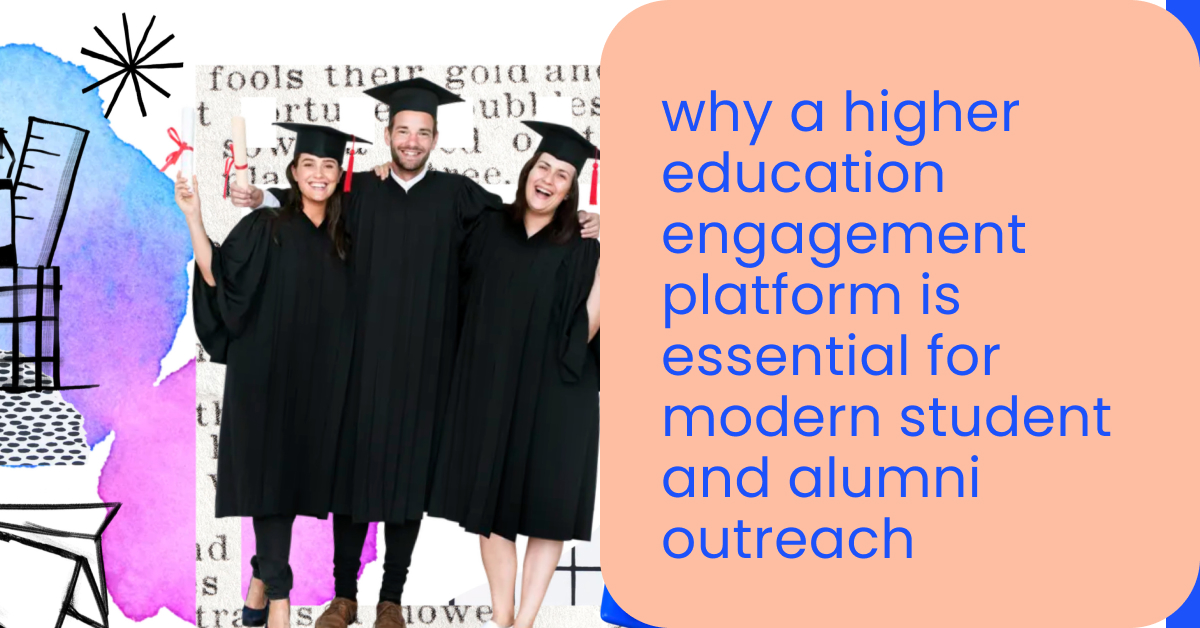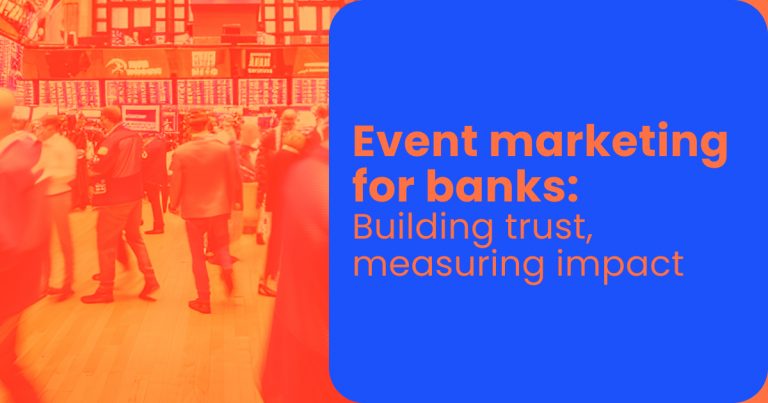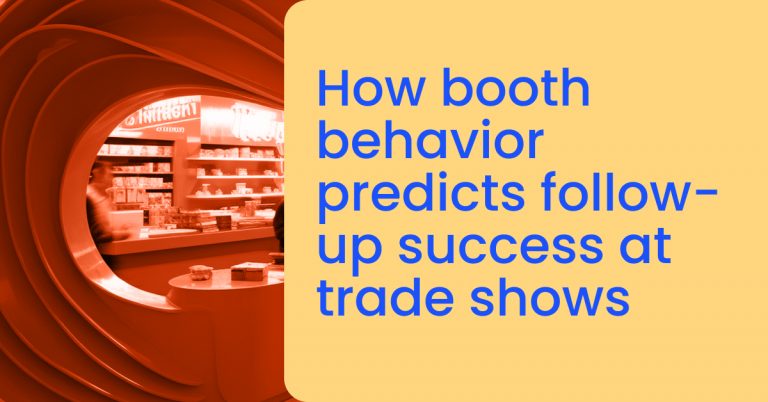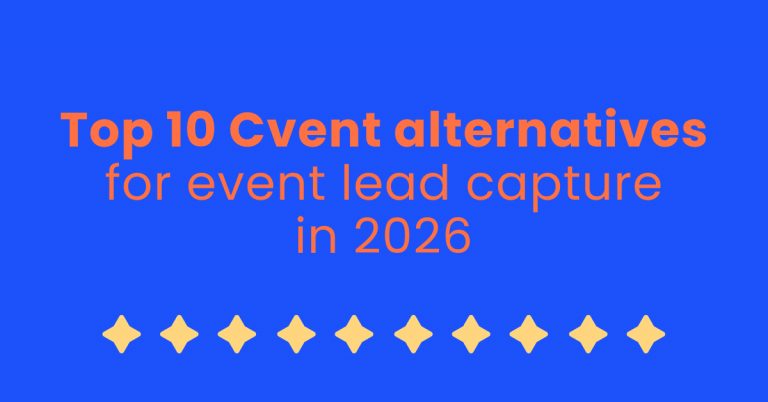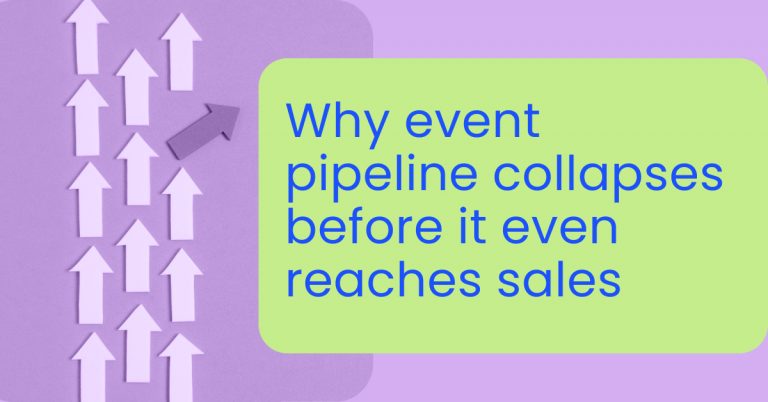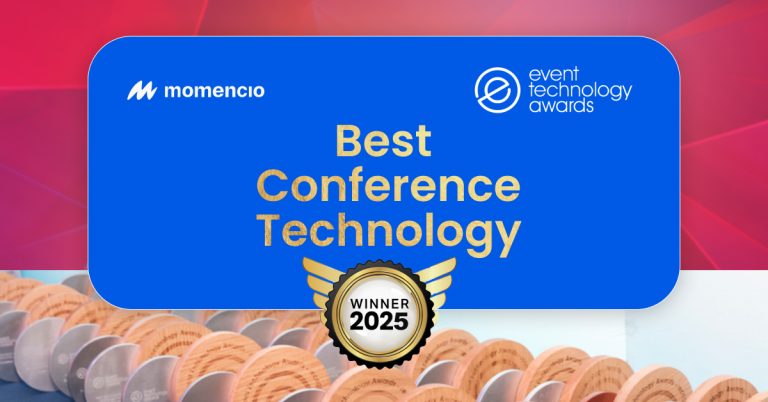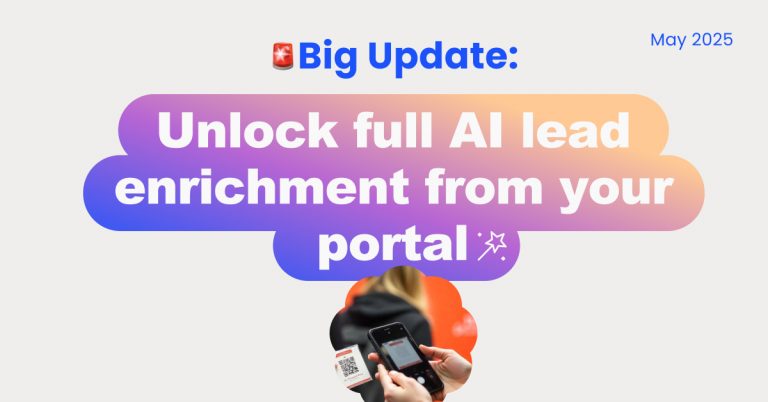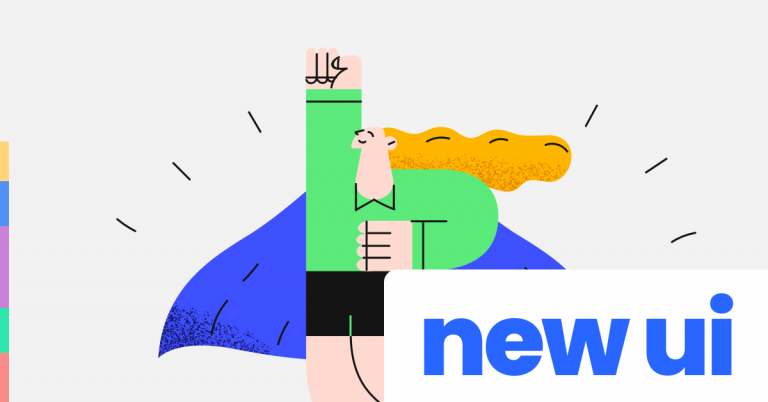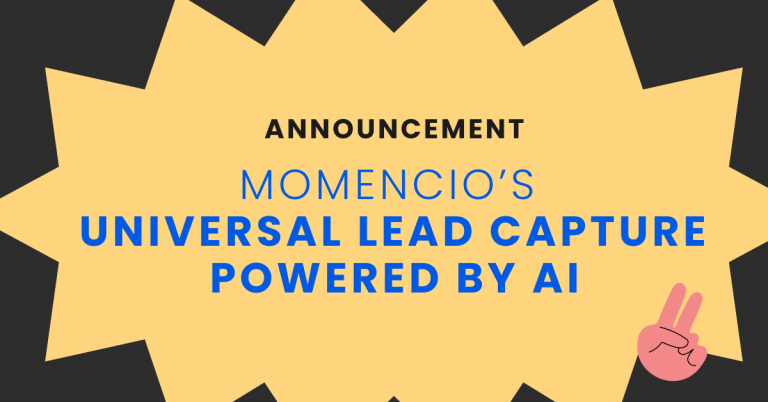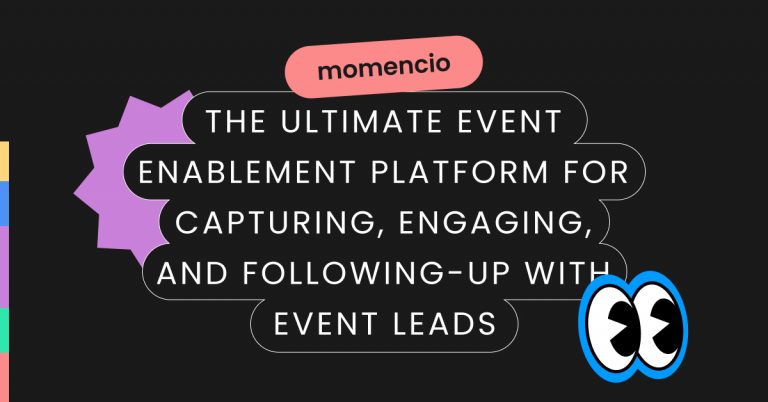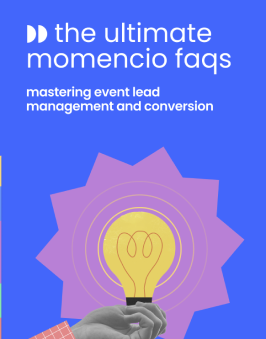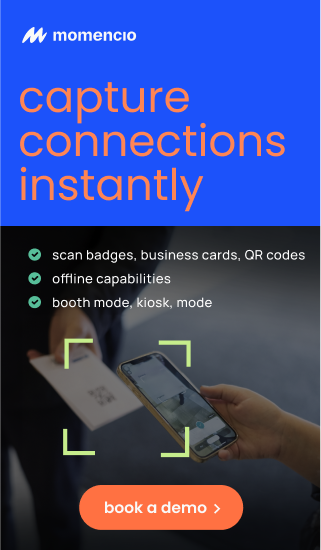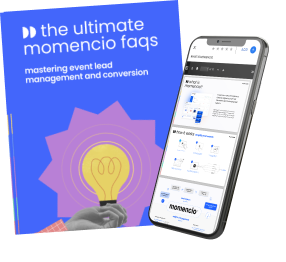⚡ TL; DR
Modern universities need more than CRMs or email tools—they need full visibility into who’s engaging, when, and how. A higher education engagement platform delivers that by unifying recruitment, alumni, advancement, and partner outreach with real-time insights and intelligent follow-up workflows. This article explains how such platforms close the loop from inquiry to action, boost conversions, and help your institution turn every interaction into opportunity.
Why higher education needs a smarter engagement strategy
Higher education is facing unprecedented engagement challenges. Between declining enrollment trends and donor fatigue, institutions are being forced to rethink how they connect, communicate, and convert.
According to the National Student Clearinghouse, total undergraduate enrollment has dropped by 1.2 million students since 2019. Meanwhile, alumni giving rates have plateaued, and recruitment teams are navigating the shifting expectations of Gen Z applicants who demand digital-first experiences and fast, personalized responses.
The pressure is on. And unfortunately, the systems many universities use—basic CRMs, email marketing tools, or standalone form builders—weren’t built for this level of engagement complexity.
That’s where a higher education engagement platform enters the conversation.
Unlike traditional CRMs or post-event automation systems, an engagement platform brings everything together:
- Real-time engagement tracking
- Personalized follow-ups via microsites
- Gamified lead capture
- Centralized pipelines across admissions, advancement, and marketing
In this article, we’ll explore:
- Why your existing tech stack might be costing you valuable conversions
- What makes an engagement platform different—and better
- How momencio is helping universities like yours connect the dots from first touch to long-term relationship
If your goal is to turn more student inquiries into enrollments—and more alumni connections into contributions—this guide is for you.
The new rules of engagement: Why marketing for higher educational organizations needs to evolve
The way prospective students and alumni engage with higher education institutions has fundamentally changed. Traditional marketing methods—mass emails, static brochures, generic landing pages—no longer resonate with today’s digitally savvy, personalization-craving audiences. Universities that cling to legacy tools and disjointed communication systems are falling behind in both recruitment and alumni engagement.
The engagement gap is real—and costly
Let’s start with a reality check. Only 26% of higher education marketers believe their outreach is “highly personalized” and effective at moving students or alumni toward action. At the same time, 67% of students say they expect personalized communication based on their behaviors and interests.
This disconnect isn’t just inconvenient—it’s expensive. Institutions are investing heavily in recruitment events, digital campaigns, and fundraising initiatives without the ability to track what works or engage prospects in a way that drives results. The outcomes?
- Missed conversion opportunities
- Cold leads after initial contact
- Declining alumni participation
- Budget waste on untargeted campaigns
“Higher education institutions face a marketing wake-up call: students and alumni don’t want more messages—they want meaningful ones.”
— EDUCAUSE 2024 Horizon Report
Gen Z and Millennials have set new standards
The expectations of the primary audiences in higher education—prospective students and recent alumni—have shifted dramatically:
| Expectation | What that means for you |
| Instant access to information | Static PDF brochures are out—interactive, mobile-first content is in. |
| Hyper-personalization | Generic emails don’t cut it. Content needs to match program interests, location, and engagement history. |
| Seamless digital journeys | They expect Netflix-style experiences—cohesive, personalized, and intuitive. |
| Immediate follow-up | If you’re waiting a week to respond after an event, they’re already gone. |
You’re no longer just competing with other universities, you’re competing with the user experience of platforms like Spotify, TikTok, and Amazon. These platforms have set a standard of “know me, show me, and don’t waste my time.”
Legacy CRMs and email tools can’t keep up
Many institutions rely on CRM platforms like HubSpot or Salesforce to house their contact data—but those tools often fall short when it comes to real-time engagement. They’re designed to store information, not act on it intelligently in the moment.
Common breakdowns include:
- Data silos between admissions, advancement, and marketing
- Delayed follow-ups after events or form submissions
- No insight into which content is resonating
- Inability to personalize follow-up based on behavior
This leaves teams scrambling. Admissions counselors manually sort leads from spreadsheets. Advancement officers follow up based on guesswork. Marketing is left wondering which campaign assets drove actual interest.
These gaps create friction in the engagement journey, especially when today’s students and alumni expect instant, data-driven interactions that feel relevant to them.
From “outreach” to “orchestration”
The shift higher education needs isn’t just from analog to digital—it’s from disconnected outreach to connected orchestration.
That means:
- Moving beyond one-off email blasts to behavior-triggered, real-time responses
- Breaking down departmental silos to coordinate across admissions, alumni, and advancement
- Shifting from tracking clicks to understanding intent
A true higher education engagement platform is the technology backbone that makes this orchestration possible. It captures, connects, and converts—turning every inquiry, event interaction, or email open into a strategic opportunity.
bold & link → Check out the top trends in event marketing for 2025 to see how this orchestration is taking shape across institutions.
The bottom line?
If your institution is still relying on outdated CRMs, post-event email blasts, and manual lead follow-up, it’s not just inefficient—it’s ineffective.
To meet the new expectations of modern audiences and drive real ROI from every interaction, you need to adopt tools that are built for the now.
Next up: Let’s break down exactly what makes a higher education engagement platform different—and why it’s not just another CRM.
What makes a higher education engagement platform different?
A question we hear often from higher education marketers and enrollment leaders:
“Why do we need an engagement platform if we already have a CRM?”
The answer is simple: Your CRM stores information. An engagement platform activates it.
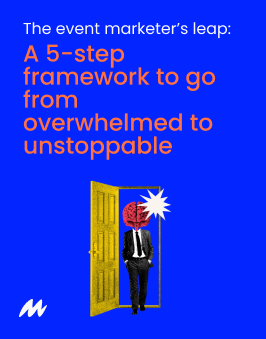
While CRMs are essential for managing relationships and tracking applicant or donor statuses, they were never designed to handle the nuanced, real-time, and behavior-driven engagement that today’s students and alumni expect. That’s where a higher education engagement platform delivers something CRMs can’t: personalized, automated, and measurable engagement across the entire lifecycle—from inquiry to donation.
Engagement platforms vs. CRMs: What’s the real difference?
Here’s a side-by-side look at what you get with each:
| Feature | Traditional CRM | Higher education engagement platform |
| Contact Storage | ✅ | ✅ |
| Application Tracking | ✅ | ❌ |
| Email Campaigns | ✅ | ✅ |
| Real-Time Lead Scoring | ❌ | ✅ |
| Behavior-Based Personalization | ❌ | ✅ |
| Microsites for Follow-Up | ❌ | ✅ |
| Event-Based Capture (Online/Offline) | ❌ | ✅ |
| Gamified Lead Collection | ❌ | ✅ |
| Cross-Department Engagement Pipelines | ❌ | ✅ |
| Real-Time Analytics & Heatmaps | ❌ | ✅ |
| No-Code Content Deployment | ❌ | ✅ |
While a CRM helps you manage static records, an engagement platform like momencio empowers you to create dynamic, personalized journeys based on how individuals interact with your content in real time.
“We moved from asking ‘Did they attend?’ to ‘What did they do, and what does it mean?’ That shift has been transformational for our follow-up strategy.”
— VP of Enrollment, Top 100 University
Core components of a higher education engagement platform
Let’s go deeper into what makes these platforms unique:
✅ Multi-channel lead capture
Capture leads not just through forms, but via games, QR codes, booth badge scans, or campus events—online or offline.
Send personalized microsites post-event or post-form, featuring tailored content based on interest areas (programs, financial aid, athletics, etc.).
✅ Behavior-driven automation
Trigger follow-up emails and content sequences based on real-time actions—what they watched, clicked, or downloaded.
✅ Engagement heatmaps
See what your audience engaged with and for how long. Track interest beyond clicks—see true intent.
✅ Gamified experiences
Use polls, quizzes, or interactive tools to both capture attention and gather leads—especially effective with Gen Z.
✅ Scoring and prioritization
Score and rank prospects based on how much and how deeply they engage with your assets—not just attendance.
✅ Pipeline visibility across departments
Admissions, advancement, and alumni teams can all track engagement journeys and coordinate personalized outreach.
Turning an info request into a conversion path
Here’s what the flow might look like using an engagement platform:
- Inquiry: A prospective student fills out a “Request Info” form.
- Automation: They instantly receive a personalized microsite with program-specific content and a virtual tour.
- Tracking: You see they spent 5 minutes on financial aid, downloaded the nursing program brochure, and clicked on campus housing.
- Scoring: momencio scores the lead as “high intent.”
- Outreach: An admissions counselor receives a real-time alert and reaches out the same day with a relevant scholarship offer.
This isn’t just marketing automation. It’s relationship enablement—driven by data and powered by engagement.
✨ Engagement platform = Orchestrated action
A true higher education engagement platform transforms passive systems into proactive strategies. Instead of waiting for students or alumni to take the next step, it nudges them forward—at the exact moment they’re most likely to engage.
Want to see how this transforms your follow-up game? Book a demo with momencio and experience the difference.
From inquiry to impact: Full lifecycle use cases across campus
What makes a higher education engagement platform so powerful isn’t just what it does—it’s how many teams and touchpoints it serves. From a prospective student’s first form fill to an alumni donor’s re-engagement after years of silence, these platforms connect the dots across the entire university journey—not just in silos, but in one seamless system.
Below, we explore how forward-thinking institutions are using platforms like momencio to modernize and unify their engagement strategies across campus.
Admissions & enrollment: Capture interest, personalize instantly
Challenge: Students today are bombarded with outreach from dozens of schools. How do you make yours stand out?
Solution: Deliver instant, personalized follow-ups and track real engagement—not just form submissions.
Use Case in Action:
- A student completes a form showing interest in pre-med.
- Within minutes, momencio sends them a personalized microsite featuring:
- Pre-med program details
- Financial aid options
- A virtual tour of science labs
- Your team sees they watched a full scholarship video and downloaded the curriculum guide.
- An admissions rep follows up that same day—armed with context, not just a name.
📊 Result: Schools using behavior-based follow-up see up to 30% higher application conversion rates than those using generic nurture emails.
— Ruffalo Noel Levitz
Alumni relations: Bring lapsed contacts back into the fold
Challenge: Alumni engagement often fades after graduation. Newsletters are ignored. Events go unnoticed.
Solution: Reconnect based on real-time interest—without blasting the entire database.
Use case in action:
- An alum clicks a link in your annual campaign email and lands on a giving microsite.
- They spend 4 minutes on an impact video and explore stories about scholarship recipients.
- momencio flags them as a “high interest” contact and routes them to the Alumni Relations team for outreach.
- They receive a follow-up microsite showcasing giving options and campus updates aligned to their grad year.
Advancement & fundraising: Prioritize high-potential donors
Challenge: Your advancement officers are working with thousands of donor records. Who should they call today?
Solution: Let behavioral insights show you who’s ready to give—and when.
Use case in action:
- A potential donor receives an endowment campaign email.
- They visit a microsite and watch a video from the university president.
- They return the next day and download a PDF about naming opportunities.
- momencio auto-scores them as “hot” and alerts your advancement officer to schedule a meeting.
Before: You were guessing who to prioritize.
Now: You have a live feed of donor intent—with supporting data to justify outreach.
Partnerships & research development: Accelerate strategic outreach
Challenge: When a potential partner shows interest at a summit or via digital channels, how fast can you act?
Solution: Use real-time engagement signals to follow up with customized, content-rich touchpoints.
Use case in action:
- A rep from a healthcare company visits your booth at a research expo.
- Collaborative research highlights
- Faculty bios
- A downloadable case study
- They spend 6+ minutes on the site and forward it internally.
- Your team is notified and follows up within 48 hours to set a meeting.
⚡ Teams using real-time engagement alerts respond 3X faster—and see higher meeting conversion rates.
One platform. Unlimited applications.
What ties these use cases together? Real-time insights, smart automation, and a single source of truth.
Whether it’s a student exploring majors, an alum revisiting campus, or a corporate partner interested in collaboration—momencio turns passive interest into measurable outcomes.
And because it works across departments, you’re no longer juggling separate tools for admissions, alumni, and advancement. You’re finally speaking the same language—and acting on the same insights.
Real-time engagement: The new metric that matters
In the past, higher education marketing relied heavily on static metrics: email open rates, attendance logs, or basic CRM updates. But in 2025, these indicators barely scratch the surface of what it takes to identify serious interest—and act on it before that interest fades.
To compete for attention and conversions, universities need more than who filled out a form or attended an event. They need to know how deeply someone engaged, when, and with what. That’s where real-time engagement tracking comes in—and why it’s fast becoming the most valuable metric in modern higher education strategy.
What is real-time engagement tracking?
Real-time engagement tracking is the ability to monitor every digital interaction a contact has—as it happens.
This includes:
- Which emails they open (and which they ignore)
- What documents, videos, or assets they view
- How long they engage with each piece of content
- What they click next, and in what order
- Whether they return to a microsite (and how many times)
This is not just about click tracking. It’s about understanding intent—how someone moves through your digital ecosystem and what that tells you about their interest level.
Engagement > Clicks: Why depth matters more than activity
Let’s compare two prospective students:
- Student A filled out a form and clicked your email once.
- Student B watched two full program videos, downloaded your scholarship brochure, and returned to your microsite three times in a week.
Both look similar in your CRM. But one is clearly more interested.
With real-time engagement tracking, platforms like momencio bring this distinction to light—so you’re not chasing lukewarm leads while your hottest prospects go cold.
Lead scoring powered by behavior (not just lists)
Traditional lead scoring models often rely on static attributes: GPA, geography, major of interest. While useful, they can’t account for who’s actually engaging right now.
Real-time lead scoring, a core feature of momencio, evaluates contacts based on:
- Content depth (how long they engaged)
- Asset type (video vs. document)
- Recency and frequency
- Click paths and return visits
This dynamic scoring helps teams:
- Prioritize outreach based on actual intent
- Send tailored follow-ups when interest is highest
- Identify “hidden” hot leads you might otherwise miss
🧠 Pro tip: You can also use low engagement scores to trigger nurturing campaigns—so no contact falls through the cracks.
Example: When timing is everything
Imagine this scenario:
- A donor prospect visits your campaign microsite and watches your endowment pitch video to completion.
- They return three days later and download the gift planning guide.
- momencio instantly scores the lead as “high interest” and alerts your advancement officer.
- That officer calls the next day—and closes a meeting.
That’s not automation. That’s precision engagement.
And it works across departments:
- Admissions sees who’s bingeing scholarship content.
- Alumni teams see who re-engages after events.
- Research development sees which partners explored collaboration decks.
Why engagement tracking is the new ROI engine
Ultimately, what you can’t see, you can’t act on.
Real-time engagement transforms your approach from:
| Old way | New way |
| “We hope they respond.” | “We know when they’re ready.” |
| Delayed follow-up | Instant engagement alerts |
| Static segments | Dynamic behavior-based targeting |
| Blind pipelines | Prioritized, high-intent leads |
It’s not about doing more. It’s about doing smarter. And nothing drives smarter outreach like live behavioral insight.
⚙️ Built for action, not analysis paralysis
momencio takes engagement data out of dashboards and puts it into your workflow:
- Admissions counselors get alerts on top prospects.
- Alumni reps see content re-engagement in real time.
- Advancement officers get donor prioritization cues based on digital behavior.
This isn’t passive reporting. It’s engagement intelligence—in motion.
Connecting silos: How engagement platforms unify teams and tools
In most universities, “collaboration” between departments is more aspiration than reality. Admissions, advancement, alumni relations, and marketing often operate in silos—each with their own tools, contact databases, and workflows. The result? Duplicated efforts, fragmented communication, and missed opportunities.
A higher education engagement platform is the unifying force institutions need—not just to centralize data, but to empower teams with the same real-time insights, the same leads, and the same tools to act on them. No more guessing. No more overlap. Just smarter, faster, more strategic engagement.
The problem with disjointed engagement
Let’s look at a common scenario on campus:
- A prospective student registers for an open house → the admissions team captures the lead.
- That same student later attends a donor/alumni event → the advancement team logs their info.
- A faculty member emails them a research opportunity → the department keeps their own records.
Three interactions. Three systems. Zero connection.
This is how high-potential prospects and future donors fall through the cracks—because no one owns the full picture.
“Universities that fail to connect their departments are missing critical engagement signals that could drive recruitment, retention, and fundraising.”
— Chronicle of Higher Education
🔄 momencio closes the loop with cross-department visibility
momencio brings every interaction—from form fills to microsite views—into one engagement pipeline visible across departments.
Here’s how it works:
- Admissions sees which content a student engaged with before and after recruitment events.
- Alumni Relations tracks post-event behavior and identifies who is re-engaging after long dormancy.
- Advancement prioritizes follow-ups based on engagement signals like content downloads or video views.
- Marketing no longer operates in a vacuum—they can see what worked, where, and why.
Everyone works from the same set of data, tailored to their goals—but unified in format, behavior, and scoring.
🔌 Integration without friction
One of the biggest objections institutions raise is:
“But we already have a CRM—won’t this just add complexity?”
The answer: No. An engagement platform can complement (not replace) your CRM.
With momencio, you have two options:
🟢 Use it as a standalone system
For teams without a CRM or those who want to move fast without IT dependency, momencio provides full functionality—capture, engagement, follow-up, scoring, pipeline—all without a separate database.
🔵 Integrate seamlessly with your stack
Already using Salesforce, HubSpot, Microsoft Dynamics, or another CRM? momencio connects via APIs or middleware (like Zapier), syncing:
- Contact info
- Engagement history
- Lead scores
- Triggered follow-ups
No data silos. No double entry. Just fluid, connected workflows across platforms.
⚙️ Designed for non-tech teams
A major reason engagement platforms succeed in higher education: they’re built for marketers, not just developers.
momencio enables:
- No-code deployment of microsites and emails
- Drag-and-drop lead scoring rules
- Team-specific dashboards (e.g., Admissions vs. Advancement)
- Branded templates across departments
Your team doesn’t have to wait on IT. You move fast—and stay aligned.
🧩 Real collaboration = measurable impact
When teams are connected, here’s what changes:
| Without platform | With platform |
| Admissions misses alumni event attendees | Shared profiles flag all student-alum intersections |
| Donors get duplicate or generic outreach | Follow-ups are targeted and timely, based on behavior |
| Departments compete for the same contacts | Contacts are tagged, scored, and routed by intent |
| Analytics live in 6 tools | Everyone sees unified engagement insights |
This isn’t just software—it’s institutional alignment. It’s how your university becomes more agile, more responsive, and more effective at every stage of the student lifecycle.
Must-have features for your next engagement platform
Not all platforms are created equal. While many tools promise lead capture and engagement, few are truly built for the complex, multi-audience demands of higher education—where personalization, data intelligence, and real-time action are non-negotiable.
Whether you’re evaluating platforms for the first time or reconsidering your current stack, these are the core features your next higher education engagement platform must include to actually drive ROI across recruitment, advancement, and alumni outreach.
-
Personalized microsites for follow-up
Why it matters: Generic “thank you” emails or static PDFs don’t cut it anymore. Today’s students and alumni expect content tailored to their interests—delivered instantly.
What to look for:
- Auto-generated microsites based on captured interests (e.g., program, location, or giving interest)
- Mobile-first, branded, and visually engaging
- Embedded videos, documents, calendars, or applications
- Personalized URLs (no logins or portals required)
📈 Microsite-based follow-ups increase engagement rates by 42% compared to generic emails.
-
Gamified lead capture tools
Why it matters: Younger audiences expect interactivity—and gamification dramatically increases form conversions and time-on-page.
What to look for:
- Quizzes, polls, spin-to-win, or trivia embedded into lead capture flows
- Instant data sync to the platform for follow-up
- Engagement scoring baked in
Platforms like momencio help institutions collect leads in fun, low-friction ways—while also boosting engagement and recall.
-
Real-time lead scoring and alerts
Why it matters: Speed is the new currency. If your team follows up within 24 hours, you’re 3x more likely to convert a lead into a conversation.
What to look for:
- Scoring rules based on time spent, asset types, return visits
- Real-time notifications when a lead crosses a threshold
- Routing capabilities (e.g., notify admissions vs. advancement based on behavior)
- Heatmapping to visualize interest levels per lead
This turns passive data into triggered actions—so your team engages at the exact right moment.
-
Visual engagement dashboards & heatmaps
Why it matters: Too many platforms bury insights in complex exports. Your team needs instant, visual clarity.
What to look for:
- Session-level data on every lead
- Time spent per asset
- Drop-off points on pages or videos
- Visual heatmaps of user flow through microsites
When your team can actually see what’s resonating, you can optimize content—and prioritize your most engaged contacts.
-
No-code content deployment
Why it matters: If your platform requires IT support every time you want to create or update content, you’ll move too slowly to stay competitive.
What to look for:
- Drag-and-drop editors for microsites and follow-up emails
- Asset libraries for videos, PDFs, presentations
- Brand-safe templates your team can personalize
- Instant publishing—no dev or web team delays
momencio empowers marketing, admissions, and alumni teams to move at the speed of engagement—no tech bottlenecks required.
-
Seamless CRM & marketing integration (optional)
Why it matters: Your engagement platform should work with your existing stack—not force you to rip it out.
What to look for:
- Direct integrations with tools like Salesforce, Slate, or HubSpot
- Middleware compatibility (e.g., Zapier)
- Two-way sync of leads, scores, and engagement data
- Optional standalone functionality if you need speed over complexity
Bonus: momencio can operate independently or as a native extension of your current systems—giving you total control over how you scale.
✅ Checklist: Your next platform should…
| Feature | Is it a must-have? |
| Personalized follow-up microsites | ✅ |
| Real-time engagement tracking | ✅ |
| Lead scoring + engagement alerts | ✅ |
| Gamified lead capture | ✅ |
| Microsite + asset heatmapping | ✅ |
| No-code content tools | ✅ |
| CRM/MA integration or standalone mode | ✅ |
If even one of these boxes is unchecked, you’re leaving conversion, engagement, and ROI on the table.
Results that matter: Outcomes you should expect
It’s easy to be dazzled by features—but what truly separates a good engagement platform from a great one is impact. And in higher education, impact means tangible results: more applications, stronger alumni relationships, faster gift conversions, and a clearer understanding of what’s working.
So, what should your institution realistically expect after implementing a higher education engagement platform like momencio?
Let’s break down the KPIs that matter—and the outcomes leading institutions are seeing right now.
-
Higher inquiry-to-application conversion rates
Before: Students fill out forms, and weeks go by before someone follows up—if they ever do.
After: Students receive personalized follow-ups within hours, and behavior data helps prioritize high-intent leads.
Average impact:
🎯 Institutions using engagement platforms report a 26–34% increase in inquiry-to-application conversion.
→ Source: Ruffalo Noel Levitz Enrollment Benchmarks
Why it works:
- Real-time lead scoring surfaces top prospects.
- Timely, personalized microsites deepen interest.
- Counselors focus on engaged students—not just everyone.
-
Deeper digital engagement per contact
Before: You know someone clicked an email—but not what they cared about.
After: You see what each person watched, clicked, downloaded, and revisited.
Average impact:
⏱️ Microsite engagement time ranges from 2.8x to 5.2x longer than generic landing pages.
Why it works:
- Behavior-based follow-ups keep people in-platform longer.
- Relevant content reduces bounce rates.
- Gamified experiences improve conversion and brand recall.
-
Faster follow-up cycles across departments
Before: Data lives in silos. Weeks are lost in transferring leads between teams.
After: All teams see the same lead score, same engagement history, and act in real time.
Average impact:
⚡ Time-to-follow-up decreases by up to 70% after implementing real-time alerts and shared pipelines.
Why it works:
- No more manual handoffs.
- Alerts trigger instantly when interest is high.
- Cross-department collaboration becomes frictionless.
-
Increased fundraising conversion from warm leads
Before: Advancement emails donors without knowing if they’re even interested.
After: They reach out the same day a donor downloads a giving guide or re-watches an impact video.
Average impact:
Gift conversion rates jump by 22–29% when behavior-based signals guide outreach.
Why it works:
- Real-time engagement triggers smarter conversations.
- Gift officers act while interest is hot—not weeks later.
- High-potential donors are prioritized first.
-
Better event ROI measurement
Before: You count attendees—but don’t know who converted.
After: You track digital behavior after events and tie interactions to applications, gifts, or meetings.
Average impact: Event ROI clarity improves by 40–60% when post-event follow-up is automated and engagement is tracked.
Why it works:
- Microsites offer trackable follow-up.
- Engagement reports show who’s worth the next call.
- No leads slip through—no effort is wasted.
Bonus: Forecasting future outcomes
Platforms like momencio offer pipeline forecasting tools that show:
- How many prospects are in each stage of engagement
- Who’s trending toward application or donation
- What content correlates with conversion success
This means you’re no longer guessing. You’re making decisions based on live, predictive insight.
🧠 What these numbers mean for your team
| Area | What you gain |
| Admissions | More apps, faster yield decisions, smarter counselor follow-ups |
| Advancement | Prioritized donor outreach, better campaign timing |
| Alumni | Greater engagement, improved attendance and reactivation |
| Marketing | Clear insight into what content performs best |
| IT/Operations | Fewer tools, better data alignment, and improved ROI tracking |
These aren’t vanity metrics. They’re bottom-line performance improvements—the kind that make leadership take notice.
Why the future of higher education engagement is platform-powered
Higher education is facing an inflection point. Prospective students demand faster, smarter, and more personalized communication. Alumni expect relevance and real value in every touchpoint. Donors want to feel understood, not just targeted.
And institutions? They want clarity—on what works, where to invest, and how to drive real outcomes from every outreach effort.
A traditional CRM or email automation tool simply can’t keep up with these rising expectations.
To meet this moment, universities need more than systems of record—they need systems of engagement. That’s exactly what a higher education engagement platform delivers:
- Real-time insights that show who’s ready to act
- Intelligent follow-up tools that personalize outreach at scale
- Unified pipelines that connect departments and eliminate blind spots
- Actionable analytics that prove ROI and guide strategy
This isn’t just about keeping up. It’s about getting ahead—turning every interaction into opportunity, and every campaign into conversion.
Whether you’re responsible for recruitment, advancement, alumni relations, or campus-wide engagement, one thing is clear: the future belongs to institutions that turn data into dialogue—and touchpoints into tangible growth.
If your university is ready to modernize how you capture, nurture, and convert your most valuable relationships—it’s time to see what’s possible with momencio.
🚀 Transform how your team engages students, alumni, and donors—book a free demo with momencio today.
Book your demo now and experience smarter outreach, faster conversions, and measurable results—campus-wide.
FAQs
- What is a higher education engagement platform?
- A higher education engagement platform is a technology solution that helps universities capture leads, track digital engagement in real time, personalize follow-ups, and measure outcomes across the entire student and alumni lifecycle. Unlike traditional CRMs, these platforms focus on behavior-based outreach, real-time lead scoring, and cross-departmental engagement visibility.
- How is an engagement platform different from a CRM?
- CRMs are designed to store and organize contact data, while engagement platforms activate that data with intelligent follow-ups, personalized microsites, and real-time behavioral insights. In short:
- CRMs tell you who to contact.
- Engagement platforms show you when, why, and how to engage.
- When integrated, they create a powerful system of record and action.
- CRMs are designed to store and organize contact data, while engagement platforms activate that data with intelligent follow-ups, personalized microsites, and real-time behavioral insights. In short:
- Can our team use an engagement platform without a dedicated IT department?
- Yes. Leading platforms like momencio are built for non-technical teams—marketers, admissions officers, and advancement professionals. They include no-code content editors, drag-and-drop workflows, and pre-built templates that allow users to launch personalized outreach without technical support.
- What kind of results can we expect from using an engagement platform?
- Universities using platforms like momencio typically see:
- 26–34% increases in application conversion rates
- 22–29% higher gift conversion from engaged donors
- Up to 70% faster follow-up cycles across departments
- More than 40% improvement in event ROI visibility
- These results stem from better lead prioritization, real-time alerts, and personalized follow-up content based on behavior—not assumptions.
- Universities using platforms like momencio typically see:
- Who benefits most from a higher education engagement platform?
- Several teams across campus benefit:
- Admissions teams can score and prioritize student leads.
- Marketing departments gain insight into content effectiveness.
- Alumni relations personalize re-engagement at scale.
- Advancement officers track donor intent and act while interest is high.
- Partnership and research development teams follow up with context and clarity.
- Ultimately, everyone who relies on strategic outreach and measurable results benefits from this platform.
- Several teams across campus benefit:
Interesting facts from research
To help reinforce key insights (and optimize for featured snippets), here are some surprising and impactful research-backed stats that support the case for adopting a higher education engagement platform:
📊 1. Personalized outreach boosts conversions by 26–34%
Institutions that use behavior-based data to personalize follow-up after inquiries see application conversions increase by up to 34%, compared to those using generic email automation.
🧠 2. 67% of Gen Z students expect tailored communication
Nearly two-thirds of prospective students say they’re more likely to engage with universities that personalize outreach based on their interests, academic focus, or digital behavior.
⏱️ 3. Response time impacts lead conversion by 3X
Following up with a lead within 24 hours makes you 3 times more likely to convert them, compared to waiting 3–5 days.
📬 4. Microsite follow-ups outperform email by 42%
Personalized microsites or landing pages with targeted content increase user engagement time and click-through rates by 42% compared to standard email follow-ups.
🔄 5. Real-time lead scoring improves pipeline accuracy by 60%
Institutions that implement real-time scoring and engagement heatmaps report 60% better forecasting of application and donation intent.
These statistics tell a clear story: modern engagement isn’t about volume—it’s about velocity, visibility, and personalization. And the institutions that embrace this shift are pulling ahead.
